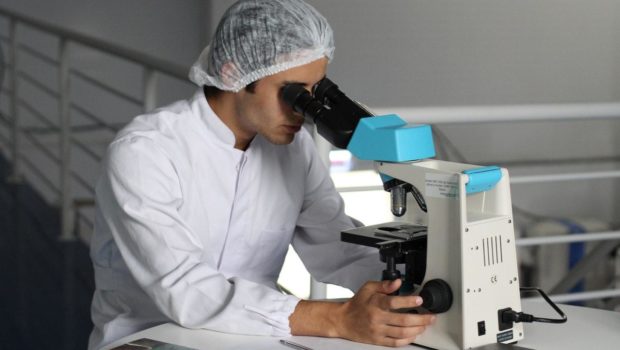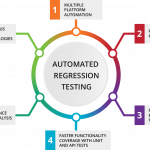Nanomedicine: Applications of Nanotechnology in the Healthcare Industry
Technology has brought wonders to our health and wellness. It has helped in the production of new and improved medicines serving as the panacea for certain fatal disorders. Also, advances in engineering have created new tools and equipment to help doctors perform more comprehensive laboratory analyses and medical procedures with heightened accuracy and safety. These are just few of the myriad contributions of technology to medicine. And with the world fast-tracking technological innovations, you can only expect nothing but awe-inspiring masterpieces that will improve our lives even more.
For most people, the application of technology in medicine is quite obvious. For the experts in scientific fields, it goes beyond what the eye can see. While many would think it impossible, manipulation of matter in the smallest size — so small only a scientific instrument like a microscope can detect it — for technological use is actually a reality. This is what we call nanotechnology today, although history tells us that the concept dates back as far as the 1950s. It’s true, this field will be as old as the Baby Boomers in a few years!
The world has witnessed various diseases reaching epidemic proportions. Even nowadays, the media reports on new illnesses that have caused thousands of deaths. Since ancient history, experts in the medical field have invested their lifetime, government funds and private financing just to provide better treatments for curable illnesses, find the causes of idiopathic disorders and create the right medicines for previously untreatable conditions. Mankind has reached significant medical milestones already, but there is still so much to do to end suffering caused by diseases. And nanotechnology can greatly help medical professionals to achieve that goal.
The application of nanotechnology in medicine has given birth to nanomedicine. This dawn has shed a brighter light on certain issues and concerns in medicine that were previously left in the dark. Today, the focus is on the following specific fields:
Drug Delivery
Sci-fi flicks abound with scenes where damaged DNA or cells are repaired with ease to cure injuries, wounds or diseases. This is one of the most ambitious goals of nanomedicine, although the result will not be as visually stunning as how the movies make it seem. Whether it is as creative as how films depict, advancements in drug delivery technology can truly reach a dramatic milestone in medical field.
Drug delivery presents a more effective approach to fighting certain diseases, especially if taking the medication can also damage other cells and organs. Extensive research and experiments have been performed to deliver drugs, in nanoparticles, directly to damaged or diseased cells like cancer cells. This allows direct treatment of the affected cells and early detection of diseases. Also, it improves the effectiveness of certain medicines that are poorly water soluble.
Another goal for using nanotechnology in drug delivery is to avoid or reduce harming healthy cells. This means nanotechnology is applied to provide accurate site targeting of damaged parts and avoid affecting the healthy ones. Precise drug delivery also allows medicines to break certain barriers that prevent them from affecting damaged parts.
Currently, both the medical and engineering fields are working hard to expedite the development of technology for drug delivery. Some of these are being tested in laboratories and hopefully will be proven to be effective and, at the same time, safe for the patients.
Antibacterial
Not all medicines work for certain diseases or pathogens. This is the case for several illnesses caused by bacteria that win the battle against antibiotics, and cause drugs to be ineffective in treating damaged cells. This prevents or delays the treatment of certain illnesses that have been treated in the past. And the idea that other disorders might be drug-resistant is a medical horror that’s best not imagined.
The good thing is that there are studies at advanced stages that focus on using nanotechnology to fight bacteria that don’t respond to antibiotics, like tuberculosis. Currently there is a limited number of antibiotics that are used to treat infections caused by antibiotic-resistant bacteria. These drugs also cause certain side effects or discomfort to patients. With nanotechnology, medicine can take a big leap in combating resilient bacteria minus the effects of drugs on other cells or organs. Through this, bacteria can be killed in a safer, more effective way.
Diagnostics
Serious disorders are asymptomatic, more often than not, and patients who suffer such bad luck usually are diagnosed during the latter stages of the illness. The chances of living with these conditions stretch to a few years or, sadly, a couple of months. This is something both doctors and patients want to avoid. As much as possible, the detection of disorders, especially acute ones, should be done at the early stages, when a patient’s chances of treatment and recovery are high and when the infection is not yet widespread. The sooner means the better in these cases. And with this development, lives will be saved, life expectancy will increase and people are given higher chances to treat disorders.
Nanotechnology can help with this. Research abounds on how the application of nanotechnology can greatly assist doctors not just to detect diseases but to identify them at the earliest stage possible, and at the cellular and sub-cellular levels. This also means you only need one clinic appointment to determine if there is a potential health threat or not, saving you not just time and professional fees, but also saving every minute of your life with early treatment. Advanced imaging techniques can help identify and monitor damaged cells and tissues to determine if there is a chance that a disease exists. With this, doctors can quickly detect damaged cells, like cancer cells or dementia-affected brain cells, at the onset of the disease, at a point where an early treatment can be made before the illness becomes severe.
Much like the advent of SEO has changed the game for IT companies (the experts at BestSEOCompanies.com can tell you all about that), so is nanotechnology pushing the limits of medicine. In time, the impossible things that wowed you in movies won’t just be a work of fiction anymore, but a major scientific breakthrough that can save millions of lives, including yours. Soon the diseases we consider to be incurable will be a thing of the past, thanks to nanomedicine.

















